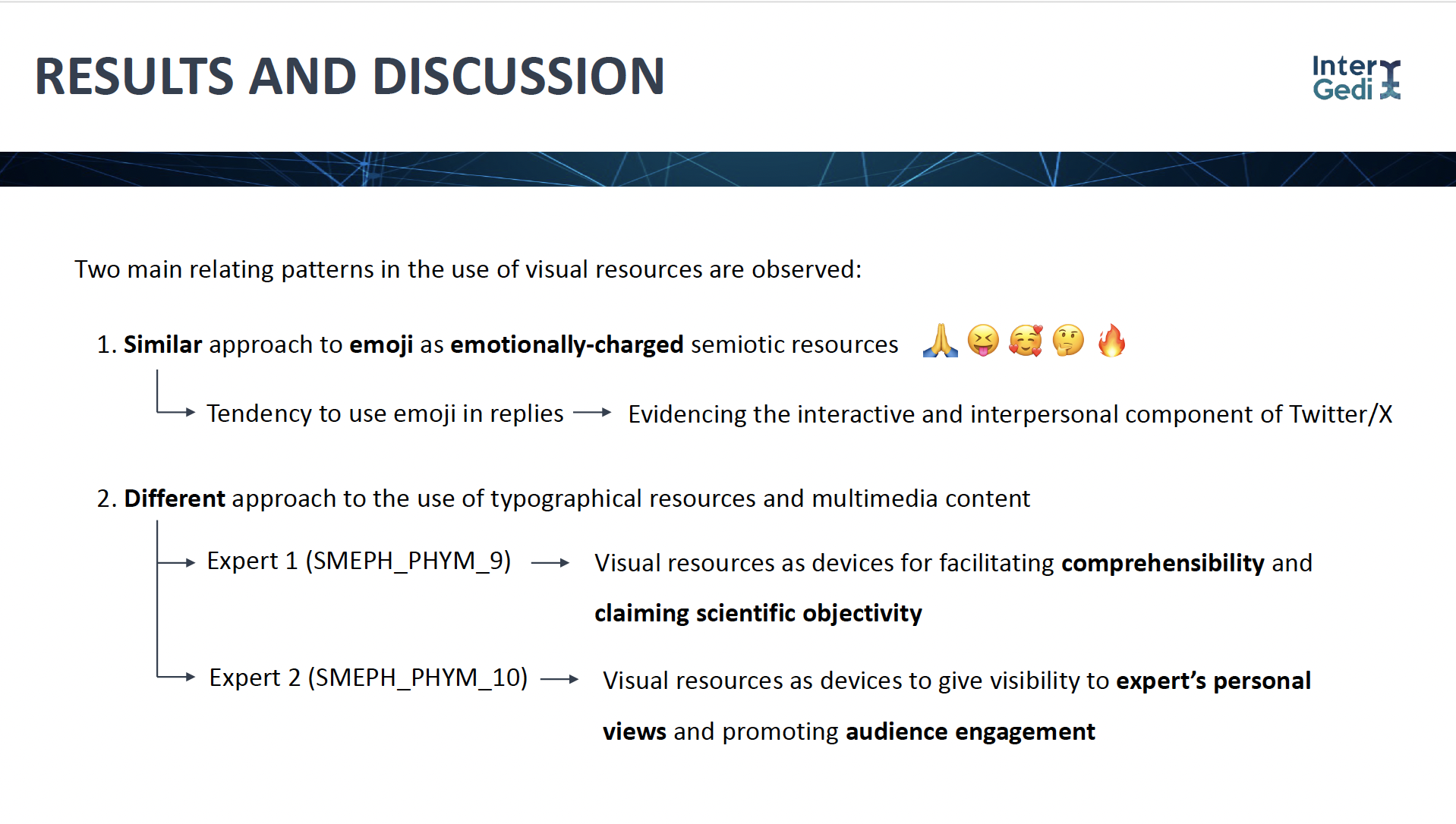11th EPICS 2024: Ana E. Sancho Ortiz explores the use of visual resources for experts’ self-presentation in social media

Our team member Ana E. Sancho-Ortiz participated in the XI International Symposium on Intercultural, Cognitive and Social Pragmatics (EPICS) conference, organised in the Universidad Pablo from the 22nd to the 24th of May 2024. She presented the paper “Academic and professional identity on Twitter: Approaching visual elements as self-presentation resources”, based on a contrastive analysis of two individual expert profiles extracted from the Social Media and Physical Health (SMEPH) Database, which she is compiling for her PhD project. In her presentation, Sancho-Ortiz explored the function of visual elements in the caption and multimedia content of Twitter posts considering their contribution to the user’s self-presentation. She addressed the combination of typographical elements, hyperlinks and multimedia, and identified a connection between the use of certain elements (e.g., conceptual emoji and disembodied multimedia compositions) and user’s projection as credible and authoritative members of their expert community.
The abstract of her talk can be consulted as follows:
The ever-increasing reachability of online communication has brought about the reconfiguration of users’ self-expression as a dynamic endeavour (boyd 2011; Seargeant & Tagg, 2014; Scott 2022). As a result, online identity performance is seen as an inherently social process, dynamically enacted through the strategic exploitation of the affordances of the media (Yus 2019). The leveraging of digital affordances has been particularly prominent in some online contexts, as is scientific communication, within which scholars adeptly exploit the hypertext and multimedia capacities of digital texts to enhance the visibility and disseminating potential of their work (Lorés & Diani 2021).
This contribution approaches the enactment of expert identities on Twitter accounts for science dissemination from the field of physiotherapy. Specifically, by way of case studies, I explore the role played by visual semiotic resources in crafting an academic and professional online persona in two individual accounts from the HealthTweet Corpus. Thus, departing from Brown and Levinson’s 1987 concept of ‘positive face’ and drawing upon Kress and van Leeuwen’s visual grammar ([1996, 2006], 2021), this study analyses the presence of visual elements (namely, emoji and audio-visual content, either in video or in image file format) in a closed set of 40 tweets (20 per account).
Some initial findings point to a discernible connection between the use of emoji and the reference to non-academic, personal matters. This might suggest that two different, yet complementary, types of identities can be enacted by Twitter expert users: personal and professional-academic. Regarding personal identity, a tendency to promote healthy lifestyle practices (e.g. working out) is observed in the choice of sports-related emoji. Concerning professional-academic identity, it appears to be reinforced by the attachment of images to the tweet. Within these, an associative pattern seems to be established in the display of academia-related content through photograph-based narrative images, on the one hand, and the uploading of physiotherapy-practice-related content through verbal-visual compositional ensembles, on the other.
